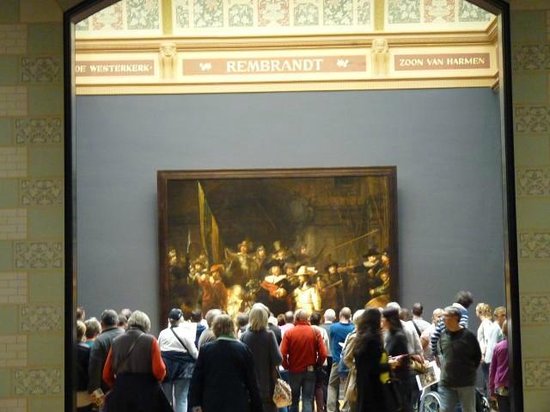Brian Sewell's annual '
books of the year' list is reliably excellent. I agree with most of his judgments about the year's major publications, but he's spotted some lesser gems too. He's quite right to praise Ashgate, publisher of expensive hardbacks for the academic library market. They have an undeserved reputation as publisher of last resort when you can't find a university press, but in recent years they've published a lot of the most interesting art books, at a time when some of the great university presses are dumbing down. Brian no longer writes regularly for the Evening Standard, which isn't the paper it once was. But how wonderful that a local newspaper can still publish a list like that, heavy on academic books and full of insight and surprise.
Brian's aside, I've found the plethora of 'books of the year' lists disappointing. Many seem to be complied by people who don't read much, populated by the predictable and the mediocre. Even its critics make obeisance to Thomas Piketty's
Capital, which I found superficial. It's well written and the use of historic and literary evidence is interesting, but it's more instructive to read the critical debate than the book itself. I doubt it will become a classic. Francis Fukuyama's
Political Order and Political Decay seemed to make fewer 'best of' lists, but it's a far superior book and perhaps the book from 2014 that will have most staying power. It's too wide ranging easily to review. It analyses the dialectical processes that give shape to particular forms of political order and how they come under pressure and fail. Fukuyama manages at once to be both sophisticated and colloquial, advancing his argument by vignette and case study. A great read and by far the best take on America's political ills. The other great book of the year is Jürgen Osterhammel's masterful
The Transformation of the World: A Global history of the nineteenth century, which avoid the European bias of most global histories. Osterhammel is particularly strong on Asian history, but he gives a lively sense of the forces that were reshaping the world. Those are some of the books I failed to review last year; here's some more detail on some that I read over the holidays.
Historical scholarship in all disciplines tends to focus on what's important or valued today, so our understanding of the history of collecting and connoisseurship is skewed by our contemporary concerns. Far more is written about paintings than sculptures. Britain's country house picture collections have been celebrated for centuries, commemorated in catalogues and guidebooks, studied by connoisseurs and picked over by dealers and collectors. But ancient sculpture was also collected ardently. Today it's too often regarded as mere bric-à-brac.
Recently two major ancient sculptures have been sold that are not only important as works of art, but were integral to two of the greatest Robert Adam interiors in England - the
Jenkins Venus from Newby Hall's great sculpture gallery, sold in 2002 for £8m, and a Roman
Aphrodite from Syon House sold for £9.5m in 2014 and currently export stopped though with little hope of retaining it. Future generation will look back in horror that we let these go, denuding incomparable and irreplaceable rooms of great works of art essential to their unity, whilst saving mere scraps and daubs by British artists already too well represented in national collections and which would be better appreciated abroad. The disinterest in their loss reflects the subservient status of sculpture today.
Ruth Guilding's magnificent book redresses the balance and shows us how sculptures were appreciated in England. It is erudite and wide-ranging, considering collecting, dealing, connoisseurship and reception of ancient sculpture in England. The illustrations are especially praiseworthy; well chosen and well reproduced. We see historic interiors (often wonderful vintage photographs) as well as details of sculptures, together with paintings, prints and books that interpreted and reproduced them.
The danger in reviewing a book like this is the halo effect. Its considerable merits dazzle us, and make it hard to find fault. But finding fault is a vital duty, because this is a groundbreaking book that one hopes will open up new avenues of research and debate. Most of my criticisms are of areas that Guilding only touched on, but which demand more scholarly attention. For example, I thought her discussion of the connoisseurship of ancient sculpture insufficiently linked to wider eighteenth century debates on connoisseurship, when connoisseurs were figures of fun as well as pillars of respectability. And I can't agree with her that taste is the outward expression of connoisseurship. I think they are quite different things that deserve separate consideration; one can have taste without being a connoisseur, surely. The question of taste takes us towards questions of the wider reception of ancient sculpture by the widening museum-going public. Guilding mentions 'debased mass-produced reproductions' (p. 148), but it is regrettably little more than a mention. Her book focuses on elite reception rather than wider diffusion of taste.
Guilding's discussion of the market can be rather superficial, taking at face value the idea that connoisseurship is dirtied by the market: "[the] commodification of antique sculpture threatened to destabliize the way in which 'virtu' was understood". Trendy terms like 'commodification' (usually means 'selling') and 'destabilize' (doesn't mean much at all) always raise my hackles. Ancient sculpture was not 'commodified' in the eighteenth century; it had always been traded, as she makes clear in her own book. Guilding refers specifically to collectors who dealt on the side, muddying the connoisseur/dealer distinction. But I'm not convinced that distinction was ever as strong as she implies; in an earlier period Sir Dudley Carleton traded ancient marbles with Rubens, getting some of his paintings in return.
Guilding is often critical of collectors and their motives, but in the concluding section on contemporary collecting the book descends into the kind of hagiography too common in studies of collecting. It's an ignominious conclusion to such a fine study.
 |
| Picture: Amazon |
As an omnivorous but amateur reader I'm especially drawn to specialist books that introduce a corner of a bigger picture. They're often more illuminating than general books written for a popular audience. This meaty study looks at Louis XIV's foreign policy bureaucracy and I found it utterly fascinating.
In this period diplomacy was becoming more professional and diplomats were more highly trained. They were also more likely to be drawn from the aristocracy rather than selected from a wider population. We might think that paradoxical, because we are accustomed to seeing merit separately from position. But both reflect the higher status that was being accorded diplomacy, and the authors explain the difficulty of appointing on merit in the absence of universal education or reliable sorting mechanisms. Appointing relatives to the administration and giving them an apprenticeship was the most reliable way of ensuring competence.
This book is full of oblique insights into absolutism, Louis XIV's France and early modern administration and diplomacy. The Sun King himself appears ain this study as a monarch more of the conference chamber than the bedchamber, contra popular perception. And the bureaucratic apparatus struck me rather more modern than I'd imagined (though depending on your prior views, you might draw the opposite conclusion). It's an excellent study, historically sensitive and also attuned to bureaucratic practicalities.
 |
| Picture: Amazon |
William Boyd
Solo Jonathan Cape 2013 £7.99
The Bond novels are dreadful literature, but wholly redeemed by their glamour and pace. It's a measure of Fleming's rare talent that no one else - even good writers - has been able to capture the élan of the originals. Boyd comes close, and Solo was fun to read. The punchy prose is better than the original, but true to its style. The luxuriant descriptions of cars and guns and girls and breakfasts comes close to caricature, but so frankly does Fleming's. But the plot was too convoluted for my taste, and the explanation via a dialogue with Felix Leiter at the end was clunky and unsatisfactory.
The mission was too grubby - securing oil resources rather than defeating cartoonish villains or wicked communists. And Bond himself was rather flatter than the original, less witty, less ironic, less glamourous.
Anachronisms are not always mistakes; a degree of self-conscious updating is necessary for the movies and the books. Overt and unthinking racism and sexism were rightly jettisoned, not for political correctness but because it would make it hard to identify with Bond's character. Scenes of sadistic violence were common in Fleming's novel, but in this one it is perpetrated by Bond himself. I hope the decision was conscious; I thought it worked in context, though it reworks Bond's character.
Other anachronisms were less deft, or else were mistakes ("Don't go there" is a phrase so much of our time). The acquisition of a fake passport is carefully described, but he has no problem changing a 'brick of notes' despite currency restrictions. And his writing about smoking was too conspicuous. It can't be handled unselfconsciously today; it's like high Victorians trying to write about sex. Like the TV show Mad Men, we are able vicariously to enjoy smoking and drinking innocently, without the healthist moralising that spoils so much of life today.
I've come late to Richard House's widely-praised
The Kills (Picador 2013 £7.99), a big quartet of related novels set around the Iraq war, and supplemented with online video and audio. I found the supplementary material contrived and unhelpful, but the book is compelling. The characterisation and quality of writing is far above the norm for thrillers, and its diffuse focus on characters at the periphery is suspenseful and brings the narrative to life. Recommended.
I followed up a recent biography of Queen Victoria with Jane Ridley's
Bertie: A life of Edward VII, which was widely praised at the time. It's superb. Ridley has a rare combination of penetrating intellect and narrative gift, dealing equally deftly with the gossip and intrigue surrounding the playboy prince and the great affairs of state and dynastic politics of fin-de-siècle Europe.








